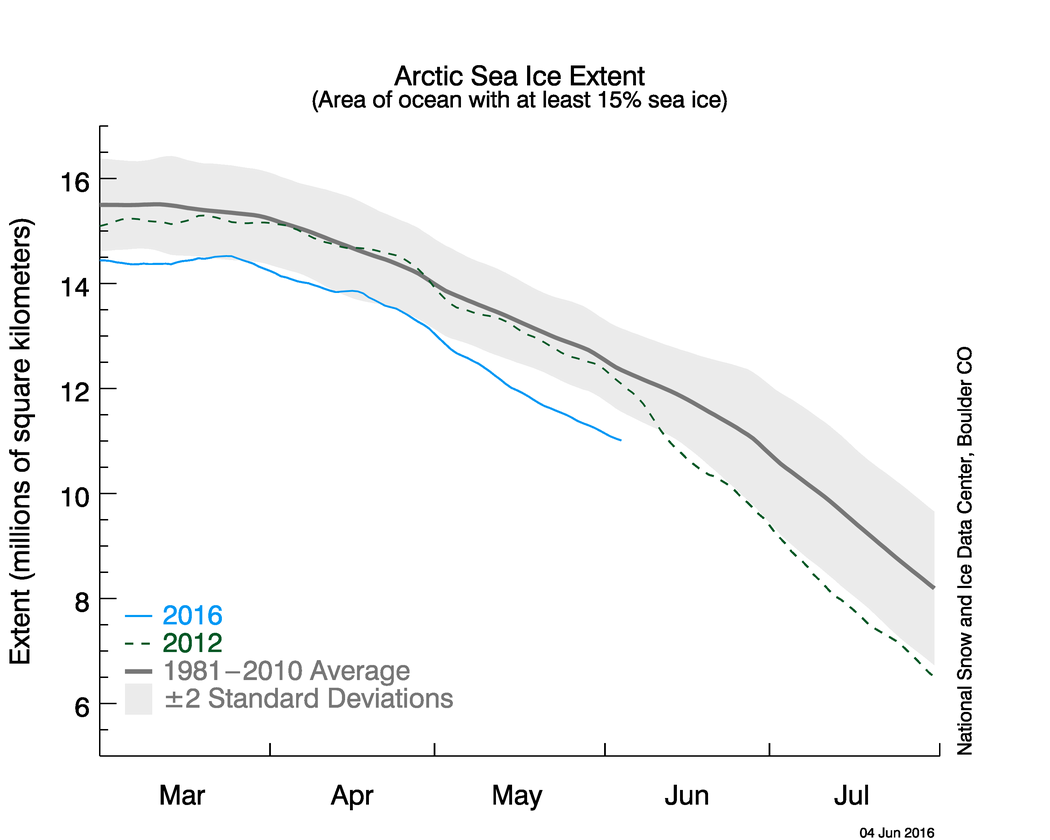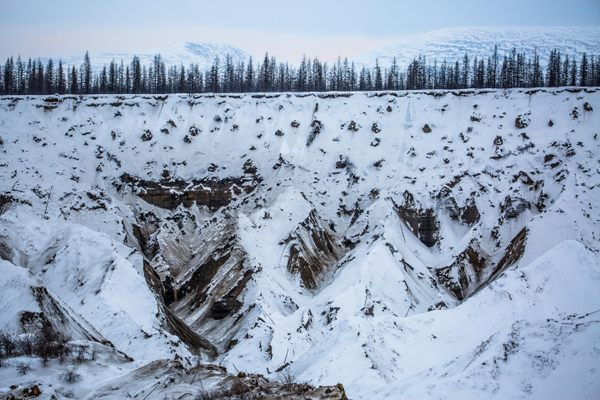Climate Scientist Claims the Arctic Could Be Ice-Free This Summer
Peter Wadhams’ claims run counter to others’ predictions, but this year’s sea ice level is alarmingly low.

A view of broken Arctic sea ice captured by the digital camera instrument aboard NASA’s C-130 research aircraft during an ARISE survey flight on Sept. 19, 2014. (Photo: NASA)
Cambridge University Professor Peter Wadhams has made headlines this weekend, telling The Independent that the Arctic could become ice-free “this year or next.” While the extreme prediction has drawn skepticism from other climate scientists, Wadhams’ warning does draw attention to a situation that many monitoring Arctic sea ice find alarming.
In an interview, Wadhams explained that he predicts Arctic sea ice will “have an area of less than one million square kilometers for September of this year,” when sea ice typically shrinks to its lowest size. With that little ice, the Arctic would effectively be considered “ice-free”—a scenario that last occurred between 100,000 and 120,000 years ago. Currently, the record low for Arctic sea ice is 3.4 million square kilometers.
Wadhams has something of a reputation for making alarming climate predictions; he first predicted a 2015 or 2016 summer sea ice collapse back in 2012, advocating for drastic efforts to reduce carbon emissions. In 2014, he told the Arctic Circle Assembly that the Arctic would be ice-free by 2020, claiming that while his prediction flew in the face of climate models, his assertions were backed by data he has collected since 1979.
Other climate scientists were hesitant to back-up Wadhams’ claims to The Independent. Professor Jennifer Francis of Rutgers University called Wadhams’ prediction “highly unlikely,” citing 2030-2050 as a more likely timeframe for the event. Similarly, climatologist Dr. Peter Gleick said he had “no idea” if Wadhams’ prediction was accurate, and expressed concern that an overly alarmist prediction could be used against the community by climate change deniers.
However, both Francis and Gleick were quick to point out that the current sea ice situation in the Arctic is extremely alarming, even if an ice-free Arctic isn’t quite imminent. In September 2015, Arctic sea ice reached its lowest point for the year; at 4.4 million square kilometers, it was the fourth-lowest minimum ever recorded, according to the National Snow & Ice Data Center (NSIDC).

The measured sea ice extent over 2016, compared to the 1981-2010 average and 2012, when the record low for sea ice minimum extent was set. (Graph: National Snow and Ice Data Center)
This year, Arctic sea ice reached its maximum extent in March, setting a new record for the lowest maximum extent (the previous record had been set in February 2015). While a low sea ice maximum doesn’t guarantee a similarly low minimum, according to NASA’s Walt Meier, Francis stated that a new record minimum was certainly possible.
“The ice is very low and there have been record-breaking low amounts of ice in January, February, March, April and now May, so this is very worrisome.
“I think we are going to see perhaps a new record [in September], that’s very possible,” she told The Independent.
Aside from the disastrous impact the loss of sea ice would have on the Arctic itself, an ice-free Arctic would affect the entire global climate. According to Scientific American, ocean temperatures would rise, raising sea levels globally and impacting weather patterns in unpredictable ways.
As Gleick told The Independent, “An ice-free—and even an ice-reduced—Arctic is leading to global impacts on weather and ecosystems, and most importantly, that the changes in the Arctic presage dramatic fundamental changes in climate throughout the globe.” Regardless of whether Wadhams’ claims come true, drawing attention to the rising temperatures in the region is critical.










Follow us on Twitter to get the latest on the world's hidden wonders.
Like us on Facebook to get the latest on the world's hidden wonders.
Follow us on Twitter Like us on Facebook